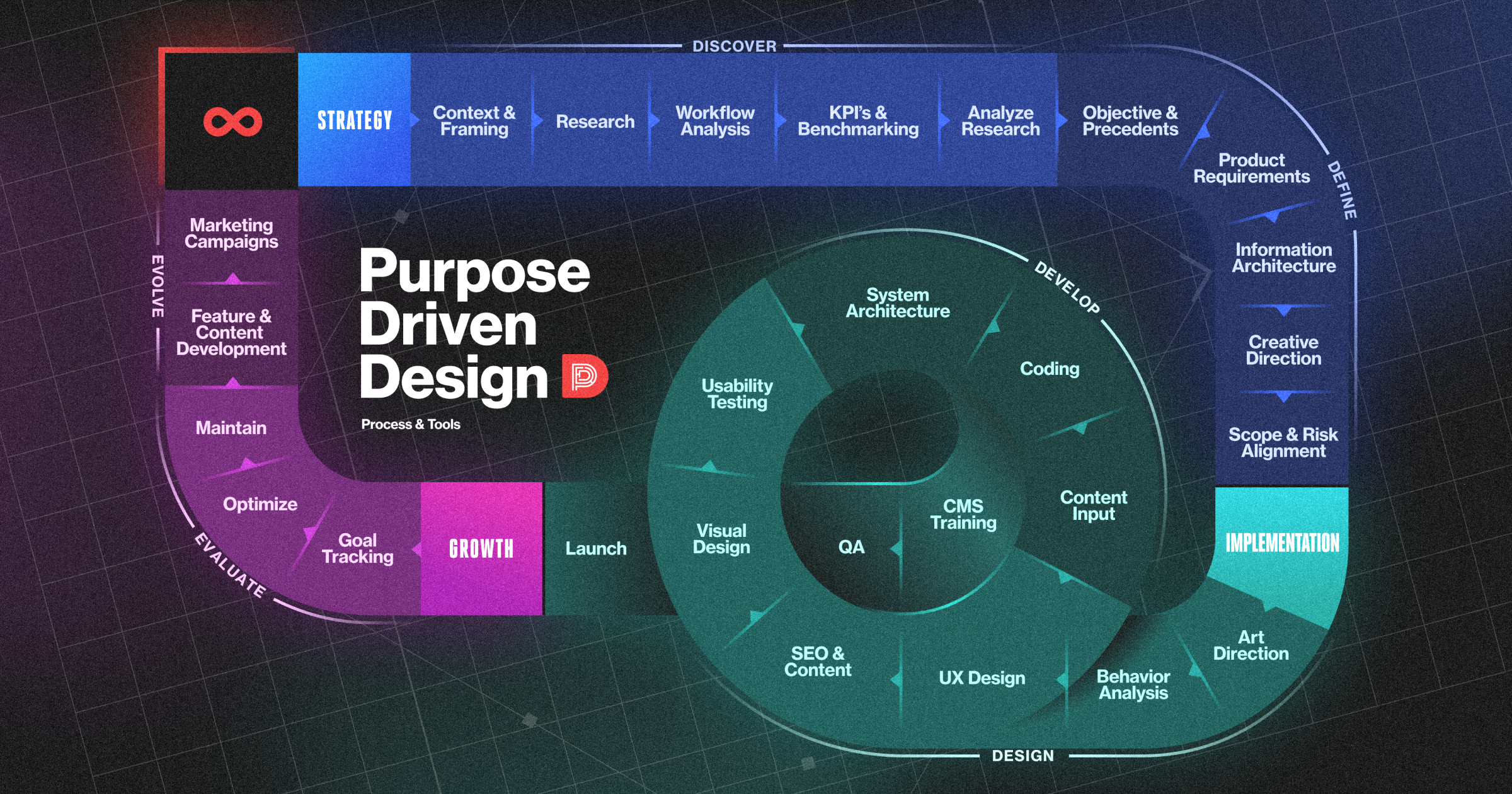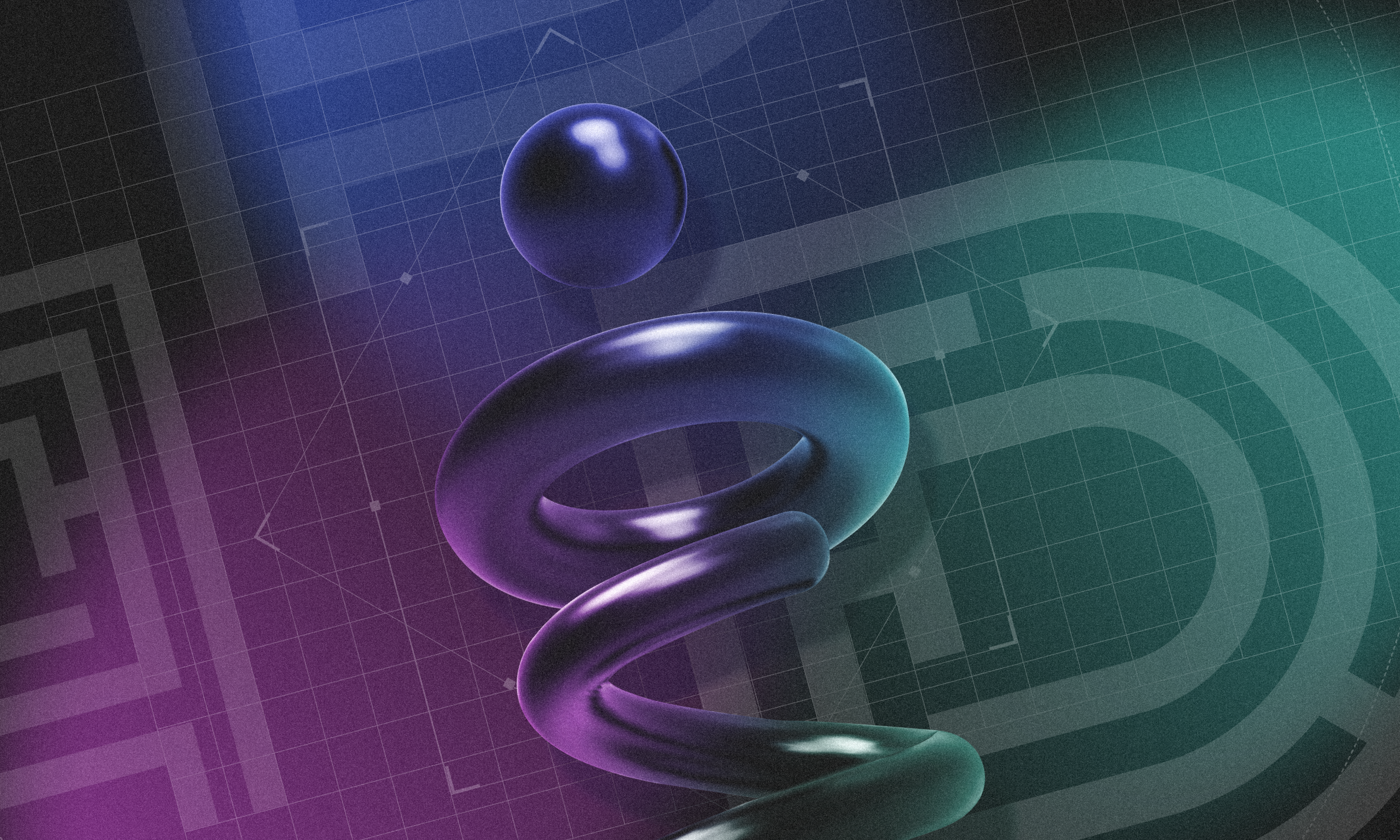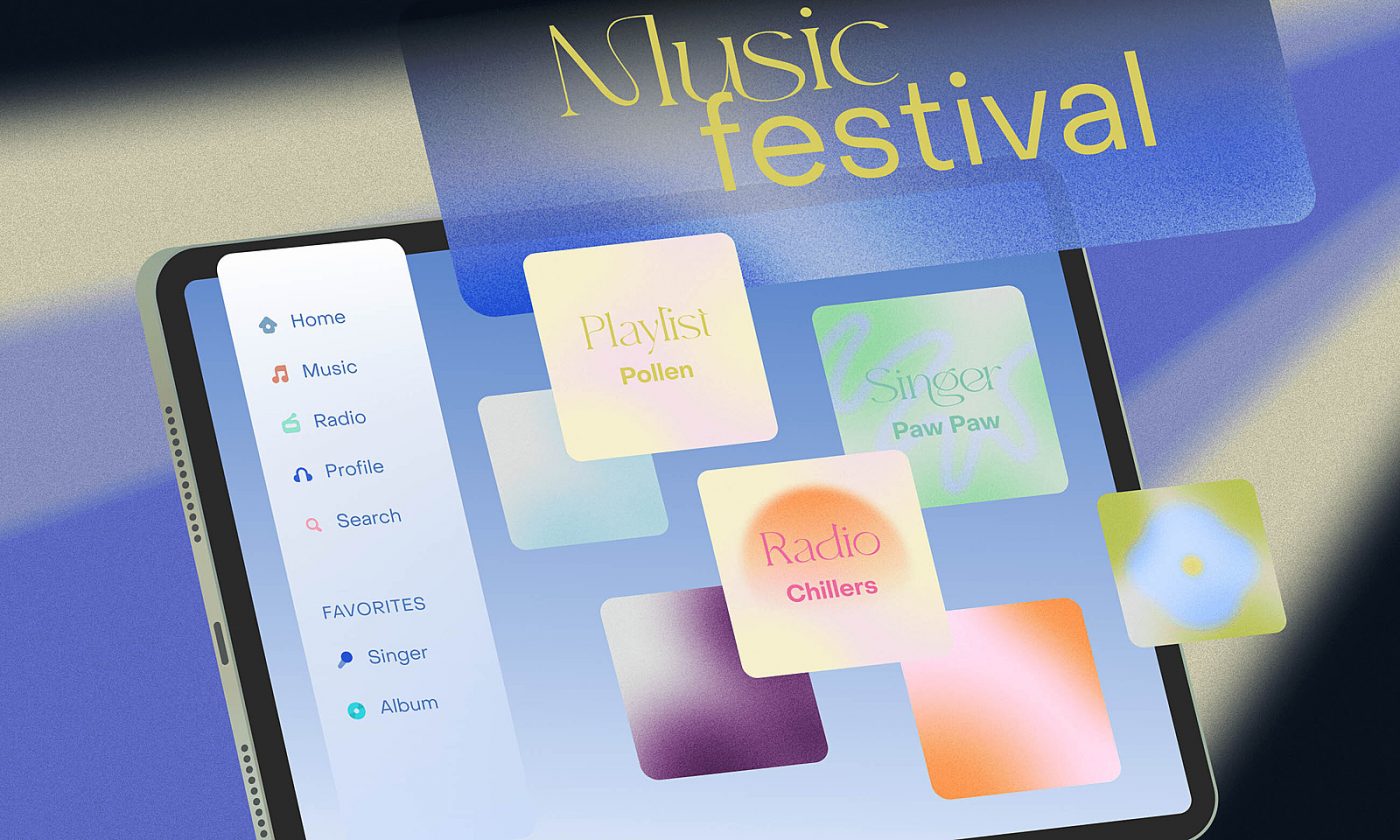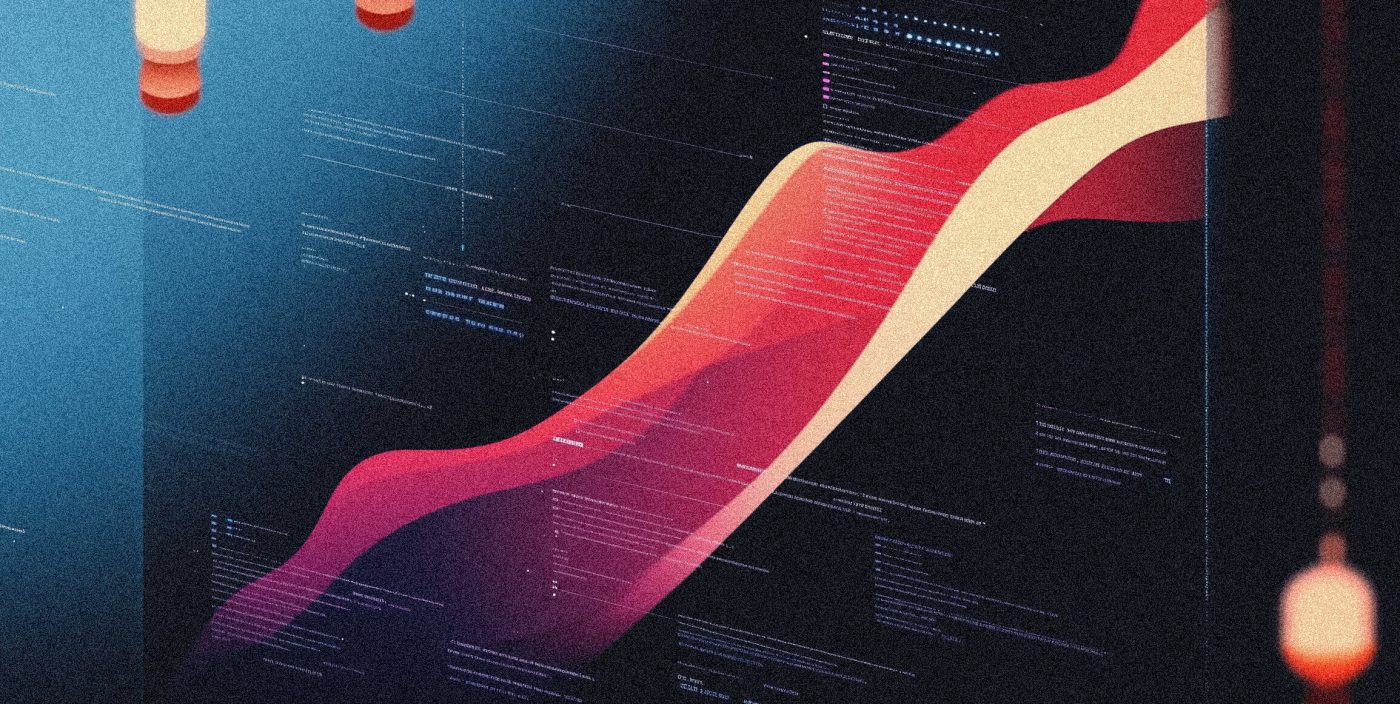In an era where digital design often prioritizes aesthetics and speed, Purpose-Driven Design (PDD) shifts the focus to intention and impact. Developed over two decades, PDD is more than a framework for stunning designs – it’s a strategic approach to solving real-world problems for users and businesses alike.
Whether it’s cola wars, mobile plan battles, GPT jousting, or shampoo brands one-upping each other, every industry has its arms race for bragging rights on differentiation. In the digital agency arena, that arms race often centers on the design process. Of course, every company has embraced or created a design framework that works for them, but we are proud of the one that is uniquely ours.
Purpose-Driven Design (PDD) is the custom design framework we’ve been developing over the last 20 years, fine-tuning it based on experience from project work. In this piece, we’ll look at what makes it work and makes it successful both for us and our clients.
Why Purpose-Driven Design?
“We aim to create design solutions that solve real problems suffered by real users,” says Greg Podunovich, senior product design strategist at Infinum. “Solving these problems can produce concrete, sometimes profound, impacts.”
Not surprisingly, these impacts ladder directly up to the goals of our clients.
PDD is intended to de-risk investments, boost the accuracy of estimates, save time and money, improve customer satisfaction and retention, drive growth, and meet user needs. It exists to improve business outcomes across a variety of KPIs.
“You can be confident you’re putting something out in the world where very little has been left to chance,” says Podunovich. “It has all been deeply investigated and validated.” Todd Doyle, creative director for North America, echoes the sentiment. “Clients are always looking for confidence that they’ve made the right decision, and practitioners want to have confidence they are on the right track. PDD bridges this gap earlier because it forces everyone to always answer ‘why’ with everything they do.”
What is PDD?
Rather than focusing so much on how we get things done, PDD focuses more on why we do the things we do. It’s not just about how to attack a website or a logo redesign or a product design. It applies to any sort of design challenge that could be thrown at the agency. The “why” can best be outlined by PDD’s principles.
PDD’s six principles of design
1
Real value is discovered.
We strive to understand your business, customers, goals, and aspirations. Your knowledge and our expertise combine to drive innovation.
2
You can’t guess your way to credibility.
Successful designs are based on facts and data, more so than opinions and personal beliefs. Intuition is valuable, but validation is everything.
3
Usefulness depends on empathy.
We bring value to users when we’re able to walk in their shoes. Our whole process is centered around getting the user into the conversation, even though we’re rarely in the room.
4
Design for context, not device.
Who you are, where you are, and what you’re trying to accomplish are more important than your operating system, hardware, or screen dimensions (if there is a screen at all). Users bring many different abilities and expectations, and we design to accommodate and include them.
5
Innovation = aspiration ÷ feasibility.
We deliver because we design systems that can be built on time and within budget. We embrace technology and risk, focusing on innovative differentiators rather than trying to reinvent the wheel.
6
Keep it human.
Emotion is at the core of every design decision we make. As AI and machine learning increasingly impact our lives, it’s more important than ever to keep this in mind. The best-performing teams recognize we’re all human, and we’re in it together.
“This principle-centered approach doesn’t just lead to visually stunning designs,” says Chris Bradshaw, Infinum’s product strategy director. “It results in impactful solutions that resonate with users and drive real-world success. We’re not confined by rigid rules but liberated to explore, innovate, and deliver value in every project.
The process

The basic building blocks of the PDD process are Strategy, Implementation, and Growth. Within each phase are the key activities we normally conduct.
For example, Strategy often involves things like context and framing exercises, research analysis, technical feasibility studies, audience definition, and roadmap creation. In Implementation, it’s setting the art direction, infrastructure setup, development, security modeling, and testing, among other activities.
The framework guides project planning and scoping and also helps Infinum lead clients through their process. It establishes a clear path forward and helps keep everyone aligned when a project is humming along at full speed.
“The process helps us ensure we approach our projects strategically and don’t fall into the trap of doing design for design’s sake. The goal is not just to make something visually attractive. The goal is to design something that effectively solves a problem.”
SHANNON RUETSCH, HEAD OF EXPERIENCE DESIGN, INFINUM
“Before we had this process in place,” Podunovich says, “the paradigm was the agency would provide a few options, the client would pick the one they liked the best, and then we’d go with that. We’ve found that by staying true to the principles of PDD, we are positioned to hit the mark much more effectively. And when we can arrive at the solution to the user problem faster, we have more ability to innovate elsewhere on the project.”
The design process is a fast-paced loop informed by data and insights. It’s the idea of design, test, learn, design. There’s a lot of flexibility built in because we’re not fixated on processes. We’re fixated on our principles.
In simple terms, what that means is that we are not obligated to move from Step 3 to Step 4 simply because that’s the way we always work. We are able to reset quickly by looking back at what was learned in discovery or in testing and make swift adjustments.
“PDD provides a lens into the future that everyone can use,” says Doyle. “It reminds teams about where they’re heading and prevents them from getting distracted by interim steps or immediate obstacles.”
Shannon Ruetsch, head of experience design, echoes these thoughts about the framework’s grounding effects: “Following the PDD process helps our team ensure we approach all of our digital design projects strategically and don’t fall into the trap of doing design for design’s sake. The goal is not just to make something visually attractive. The goal is to design something that effectively solves a problem.”
How is PDD different?
The component pieces of PDD may be similar to other frameworks, but the way we put them together is unique for a couple of reasons. First, we know how to leverage the process because we designed it based on decades of client experience. It’s one of the benefits of being in business for a while: our design framework is essentially a years-long research project. (Similarly, Infinum created the project management software Productive, which is now deployed by hundreds of other agencies around the globe.)
And, critically, PDD is a reflection of our people and their values. According to Podunovich, “It grew from our thinking, so it provides a north star for all we do, and it also attracts like-minded people who appreciate our way of working with clients. To the extent that it is a kind of secret sauce, it has to do with the makeup of the people who are here.”
The magnetic pull of PDD works in other ways as well. Client fit is critical to success, and what we’ve found is that not only does PDD help attract the right people to our team, it helps attract clients who appreciate the way we work and that amplifies our success.
The bottom line of PDD
To clients accustomed to kicking off design immediately following a brief, a system like PDD may seem slow or full of added steps. Indeed, PDD’s success relies heavily on discovery and definition. There may be more upfront time spent in these areas, but as Podunovich explains, in his experience, PDD is cost-efficient:
“When clients see designs that reflect everything that we’ve been talking about with them up to that point, it removes a lot of the swirl that can come from subjective opinions about the design.”
Some of our steps may necessitate more cost initially. But that is where we differentiate between initial investment and long-term savings.
PDD is foundational. It is not based on features. It is based on needs. And it enables us to solve complex problems in elegant ways.
“PDD is there not just to get the best work out of our team, it exists to help clients get the best work out of their teams,” says Doyle. “One of the most rewarding things is when clients adopt these processes as their own and see how much they can impact their productivity.”
If you are interested in learning more about Purpose Driven Design and how it might support the needs of your business, reach out to learn more.
Karri Offstein Rosenthal is a digital strategist, writer, and podcast host-producer whose latest series, “Held,” was a Top 25 Apple documentary podcast. Her play, “Broken Water,” was presented as part of the Lab@Piven and The Oil Lamp Theater Play Reading Series in the Chicago area. She was Director of Online Selling for the Scholastic Education Group and a marketer for startups and established firms in the education and beauty industries.











